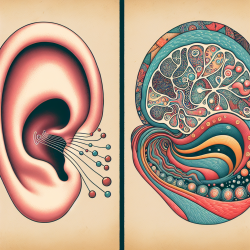As practitioners, we are always on the lookout for opportunities to enhance our skills and knowledge, especially when it comes to rare and complex cases. One such case is highlighted in the research article titled "Idiopathic Thrombocytopenia and Neurologic Manifestations in A Young Female Leading to the Diagnosis of Wilson’s Disease." This case study offers valuable insights that can help us improve our diagnostic skills and encourage us to delve deeper into the intricacies of such conditions.
Wilson’s Disease (WD) is an autosomal recessive genetic disorder characterized by the accumulation of copper in tissues, leading to neurological, psychiatric, and hepatic symptoms. While the prevalence of WD is relatively low, the condition is treatable if diagnosed early, making it crucial for practitioners to recognize its signs and symptoms.
The case study details the journey of a 19-year-old female who initially presented with idiopathic thrombocytopenia and gradually developed various neurological and psychiatric symptoms. Here are some key takeaways from the case study that can help us in our practice:
- Recognize Early Signs: The patient initially presented with idiopathic thrombocytopenia, a rare hematologic manifestation of WD. As practitioners, we should be vigilant about such unusual presentations and consider a broader differential diagnosis.
- Monitor Neurological Symptoms: The patient developed symptoms like dysarthria, writing apraxia, and dystonia. These neurological signs, especially in combination with hematologic abnormalities, should prompt us to consider WD as a potential diagnosis.
- Conduct Comprehensive Examinations: The presence of a Kayser-Fleischer ring, observed through slit lamp examination, was a significant finding in this case. Comprehensive physical and neurological examinations are essential in identifying such diagnostic clues.
- Understand the Importance of Genetic Disorders: WD is a genetic disorder, and early diagnosis can significantly improve patient outcomes. Familiarizing ourselves with the genetic aspects of such conditions can enhance our diagnostic accuracy.
- Consider Multidisciplinary Approaches: The case involved consultations with various specialists, including neurologists and infectious disease experts. Collaborating with other healthcare professionals can provide a more comprehensive understanding of complex cases.
By incorporating these insights into our practice, we can improve our ability to diagnose and manage rare conditions like Wilson’s Disease. Additionally, this case study underscores the importance of continuous learning and staying updated with the latest research.
To read the original research paper, please follow this link: Idiopathic Thrombocytopenia and Neurologic Manifestations in A Young Female Leading to the Diagnosis of Wilson’s Disease.










